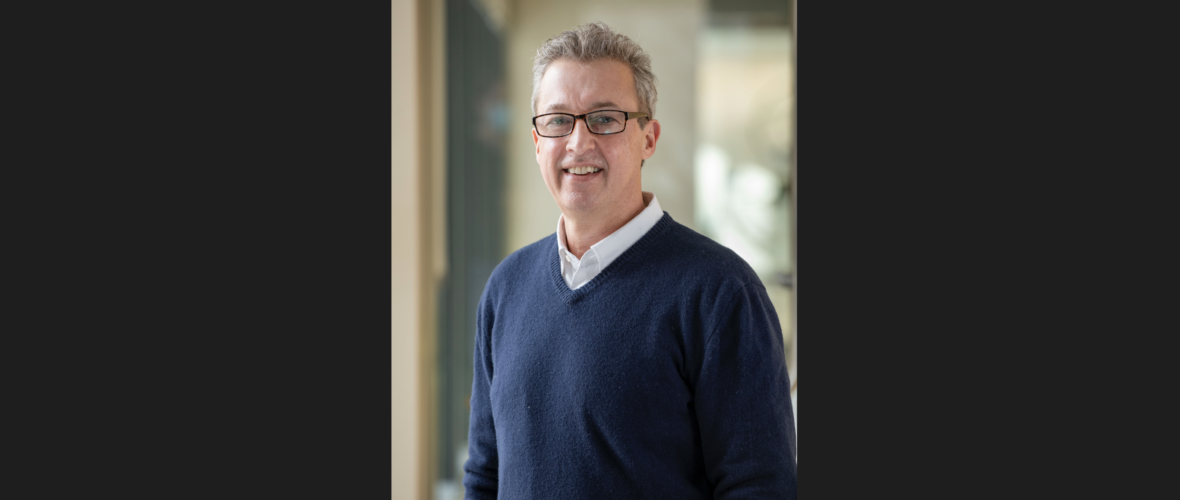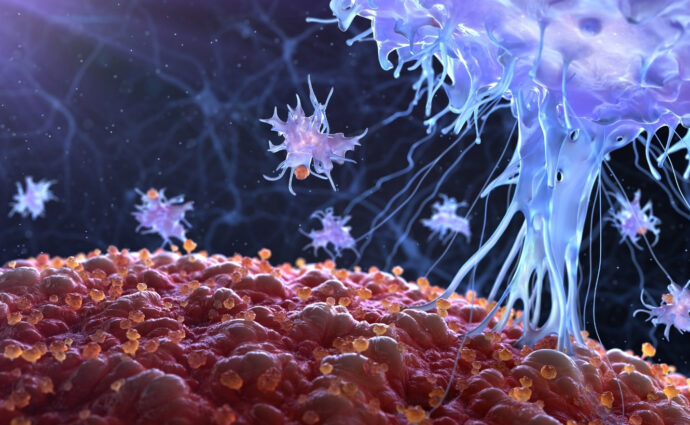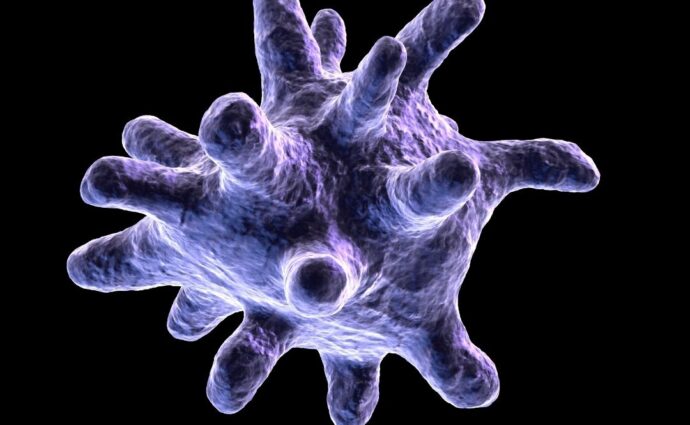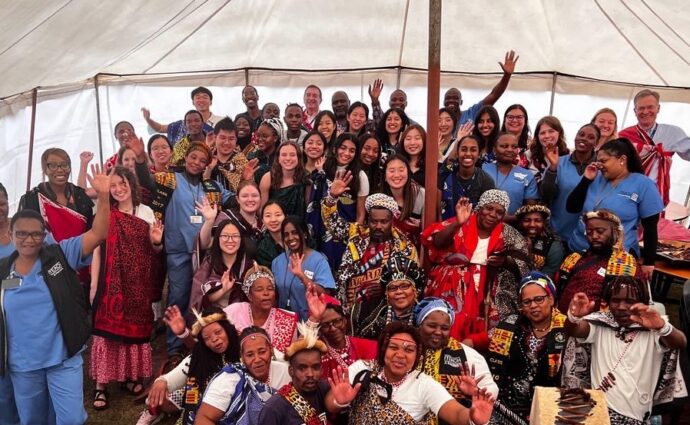Date: October 31, 2022 By: Emily Makowski

National Hispanic Heritage Month is September 15–October 15. This month commemorates the history, achievements, and contributions of Hispanic people from or connected with Spanish-speaking regions, including those whose ancestors came from Spain, Mexico, and much of the Caribbean and Central and South America. Here’s the last article in this year’s Q&A series, featuring Facundo Batista, PhD, Scientific Director of the Ragon Institute and Professor of Microbiology and Immunology at Harvard Medical School.
What inspired you to go into research?
I wanted to study biology because I was originally very much inspired by Jacques Cousteau, the famous oceanographer, and had the dream of making marine biology documentaries. When I got to university, I became very interested in molecular biology because of two professors who had recently come back to Argentina: the late Daniel Goldstein, and Alberto Kornblihtt. They gave me a great introduction to molecular biology. At that time, molecular biology was about cloning a gene or a genetic phage.
I started out working two years as a technician without pay, helping to prepare media and cleaning and sterilizing glass petri dishes. After graduating from the University of Buenos Aires, I got a fellowship to do a master’s degree at the Leloir Institute, named for Argentinian biochemist Luis Federico Leloir, who received a Nobel Prize for his work on glycogen energy storage in the body. There, I started to do viral sequencing from RNA.
I wanted to do a PhD, but I felt like I couldn’t come to the US. I didn’t speak any English. There was an opportunity in Italy at a new center called the International School of Advanced Studies, which encouraged researchers from developing countries to apply. I decided to come to Italy for a month to prepare for the entrance exam, figuring that if I failed, I would travel throughout Europe for a couple months and then go back to Argentina. But I passed the exam and did my PhD on human immunoglobulin.
What was your path to the Ragon like after completing your doctoral work?
After my PhD, I applied to the Medical Research Council Laboratory of Molecular Biology in Cambridge, UK. I was interested in DNA sequencing, protein structure, and monoclonal antibodies, and I joined the lab of Michael Neuberger, who was brilliant. It turned out that I became the most successful postdoc in the history of that lab, both in terms of papers and contributions, but I didn’t realize that at the time. I was always thinking that I was less than the others because I couldn’t speak English as well or discuss science on the same level in English.
After five years, I joined the Imperial Cancer Research Fund [now Cancer Research UK] and started my lab there. The labs were very small – I had a technician, a PhD student and a postdoc for the first four years. Thanks to them, we did very, very well, and the lab became part of the newly formed Francis Crick Institute in 2010.
I became a member of the Ragon’s Scientific Advisory Board in 2013, and then I joined the Ragon as Scientific Director in 2016. I had been tenured at the Crick Institute and my two kids were born in London, so we were well settled, but this opportunity came along and I got the sense that this would be really good for the next stage of my career. I had never done science in the US, so that was a curiosity for me, and I felt like Boston was a great place.
When I joined the Ragon, I changed my research direction. I wanted to apply what I had learned in basic science and immunology to vaccine design, so I really started building from scratch. And now it’s paying off. We’ve had three Immunity papers this year, things have been moving fast, and I have a great group of people here.
What has your recent research been about?
To give some context, I was fascinated by B cells and other cells that produce antibodies because I felt they were simple. I never wanted to work on T cells, for example, because I could never understand their complex binding mechanics. To be honest, nobody cared about B cells when I started doing research on them. Even as a group leader, when I presented my work at a conference session on B and T cells, most people were there for the T cell talk. If there were 500 people there, as my turn came, it felt like 445 of those people walked out of the room. But I was always interested in B cells because I felt like I could develop a good understanding of them.
B cells have since become seriously important in bioindustry. There is a trillion-dollar market today for monoclonal antibodies, and they are also used in vaccine design. I worked a lot initially in understanding the basic principles by which these B cells are activated in vivo, and now I’m applying those principles in trying to understand how until antibody responses against vaccines are generated or how we can generate better therapeutics out of those antibodies.
In my career I’ve been changing every 5-7 years – doing impactful work and then moving on to something new. I’ve done that very successfully several times. When you start something new, you start with very naive questions about things that people in the field for 10-20 years may have accepted as dogmas. If you are thorough and try to guide questions, there is always interesting science behind that.
I’ve published about 100 papers total, which is not actually considered a lot for a researcher at this stage. I try to make sure that all the papers I publish are fundamental stories that are super complete, and it’s my style to only be a co-author on a paper if I felt that I have made a serious contribution to it.
You’ve lived in four different countries; what has that been like?
I never thought I would leave Argentina. The first 10 years or so of being abroad were really difficult. Right at the beginning it was very hard because I didn’t speak English. People would make fun – when I was a postdoc I got into an argument with another postdoc in the lab from Australia, who spoke very fast and I couldn’t always follow everything he said. I explained to him that I spoke Italian, Spanish, French, and Portuguese, and I couldn’t understand why he expected me to know English perfectly when he didn’t know any other languages himself. After that he changed his behavior, and we actually became close friends.
By trying to integrate into different societies, I learned how to be part of each of these societies. I feel I am Argentinian, but I can also go to Italy, where my wife is from, and feel like a local and be understood. When I’m in the UK, I feel British. It’s beyond tourism – you understand the essence of the local culture.
When people immigrate there’s typically a reaction of rejecting the local culture because it doesn’t match the culture where you come from. I try to overcome that and understand the positives that every culture has to offer. Someone moving to the UK might think the food is bland at first, but then you learn that chips with vinegar is the best thing ever! But it takes time to get there.
There are things to appreciate in every society that you live in, and you can’t get fixated on all the things that just don’t look like what you’re used to. We Latin people tend to have more physical contact – in Argentina it’s common to hug and kiss your friends, while here it can be rare to get a handshake. In Argentina or Italy, many people live with their parents for a long time, but here, it’s more common for people to move out earlier. Those are fundamental changes. But here, I think that giving people freedom and really their own enterprise also has value, and it helps people become more mature and less dependent.
There are some Argentinian traditions I try to keep going; barbeque is a big one. But the truth is, I am a foreigner in Argentina too. Even the languages evolve. For example – my grandmother was Ukrainian, and after she moved to Argentina she kept speaking Ukrainian with her sisters, but when they would meet other people from Ukraine, the language was very different. When I listen to Argentinian radio, I’m shocked by some of the language they use nowadays. But there’s a constant evolution in society. For me, the notion is never to think, “This is my home, and it should be my way.” Rather, I feel that I need to open myself to understand what society has to offer.
What advice do you have for Latinos interested in STEM, or in general researchers from other countries interested in coming to the US?
People need to believe in themselves. One thing that for me has been very difficult in my career, even today, is to sit at a roundtable and think that I am not as good as the other researchers. That is something that has betrayed me all my life, because it turns out I was just as good as the others. In many cases people might not feel like they are the same or like they are good enough, but you need to follow your dreams, and you need to feel that you can accomplish those dreams as well as anyone else.

Their findings, to be published in Cell next month, reveal how the virus manipulates immune system processes to avoid destruction by natural killer (NK) cells, a type of white blood cell that is crucial for fighting viral infections.

The lab of the Ragon Institute faculty member Hernandez Moura Silva, PhD, recently published a review in Science Immunology regarding resident tissue macrophages (RTMs), shedding light on their multifaceted roles in organ health.

After three years off due to the COVID-19 pandemic, the Ragon-MIT course HST.434 returned this January to provide 24 students a once in a lifetime learning experience